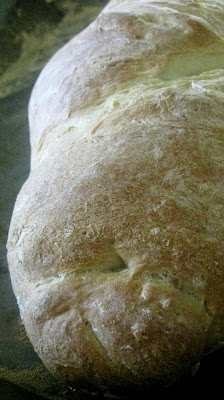
Tomorrow I embark on something a little scary. I’m going to eat local for an entire week, local being a 150 mile radius from my location in pretty urban Seattle. I’ll be documenting and doing this for my anthropology of food class, and while part of me is really excited because being a locavore is something I believe in, I’m also scared that I won’t have anything to eat. I am, after all, a pasta addict, and if I can’t find flour there goes my standby meal.

So tonight was a last supper of sorts (although a lot of the ingredients here are local too, so it isn’t like I binge on Twinkies normally) and also a pseudo birthday celebration. Because my birthday may have been a week ago, but as long as I keep getting baked goods, I’m going to keep celebrating. Initially I thought to make pasta (the thought of going without it for a week terrifies me), but as this will be a family affair and my eldest sister is gluten intolerant, something else was in order. That did not of course stop me from making bread.

Or trying to make bread. Because although I decided on a Smitten Kitchen based feast for tonight, and picked out my recipes I may not have read them. You know, the refrigerate overnight part. Which is where we come to part 1 of this recipe (yes, there are parts).

Adapted from Smitten Kitchen
Biga
Biga is apparently a starter for bread, and as right now I know next to nothing about making bread I highly suggest you click the link to Smitten Kitchen where there is a far more useful explanation.
2 ½ cups flour (the recipe calls for bread flour, but I just used all-purpose)
½ teaspoon yeast
1 cup water
Mix dry ingredients, then add the water to form a ball. Then knead either by hand or in your mixer for a couple of minutes. Lightly oil a bowl (I used canola), and place the dough in this. Cover with plastic, let ferment on counter for about 2 hours.
At this point, you’re supposed to degass it (just knead some more) and place in the fridge for overnight. Due to my poor planning skills, it was only in the fridge for about two more hours. But right now, I am not a good bread role model. It can keep in the fridge for three days, and you should take it out an hour before it is bread making time.

At this point, I took a break, took out some store bought sandwich bread, and made a grilled cheese with herbed cheese curds and mozzarella. It was excellent, and mostly I spent lunch feeling like I was cheating on my bread. But now we get to the bread making part.
3 1/2 cups biga
2 1/2 cups unbleached bread flour
1 2/3 teaspoons salt
1 tablespoon sugar
1 teaspoon instant yeast
1 tablespoon olive oil
3/4 cup to
3/4 cup plus 2 tablespoons water, lukewarm
Stir together dry ingredients before adding in olive, oil, water, and the biga (I just added all the biga I previously made. Once again, this probably is better when you follow the recipe). Adjust water or flour and once again make a ball. Then knead (or use your mixer on a medium-low speed with the dough hook) for ten minutes.
Oil a bowl (I reused the one I made biga in) and roll the dough to coat in oil before placing some plastic over and let it rest for two hours. At this point, realize that making bread is hard even if you have about five minute spurts of activity followed by hours of letting the bread rest. The dough should have doubled in size at the end of the two hours, and you want to be super careful to not degass it when you’re making it into a loaf shape. Also, you should put it in a large bowl, because with about 20 minutes to go I realized that my bowl of dough had developed a muffin top to say the least.
As we should have learned from the tortilla making escapade, I fail at shaping dough. These are supposed to be folded like a letter (I write postcards, okay?), and one of them the rectangle was too narrow to really succeed, but my second half of the dough (you should divide the dough into two, by the way) which started out still a rectangle but more squareish seems to look better.
Now that you have loaves, place them on a baking pan dusted with flour and…cover and let rest another hour. Bet you never saw that coming.
Start heating the oven to 500 degrees. One of my loaves I sprinkled with rosemary, and then I put both in the oven, along with a steamer pan on the bottom rack filled with about a cup of hot water. After thirty seconds in the oven I opened it up and sprayed the walls with water (which creates such a cool effect. If I had a cooking show I’d do it for this very reason), waited thirty seconds and re-sprayed, then turned the temp down to 450 and the time on or 20 minutes.

Then it has to, you guessed it, rest for an hour. But after all your resting you’ve surely worked up an appetite and now you get to dig in. And despite all my worries about fermentation and not using bread flour this turned out super delicious, the rosemary didn’t add much, but didn’t detract either.

No comments:
Post a Comment